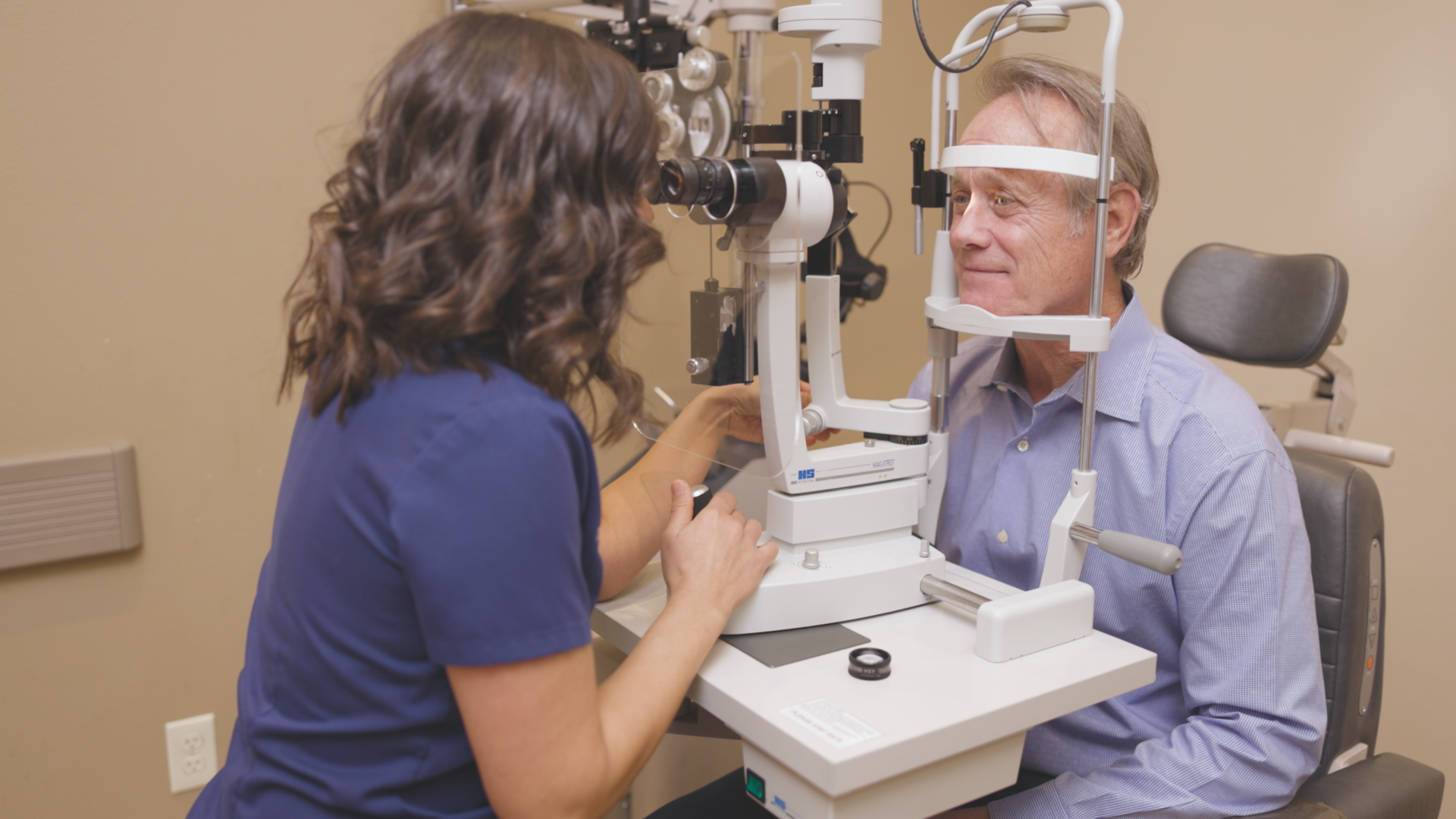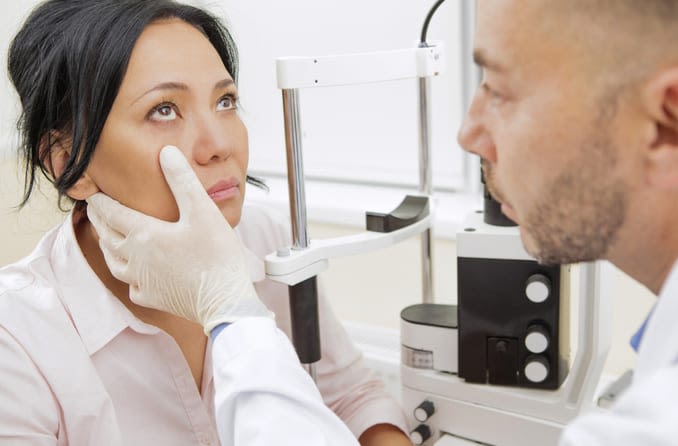The Value of Regular Check-Ups with an Eye Doctor Optometrist
The Value of Regular Check-Ups with an Eye Doctor Optometrist
Blog Article
Discovering the most up to date Technological Improvements in Optometry and What They Mean for Optometrists
In the ever-evolving area of optometry, recent technological developments are reshaping exactly how specialists approach eye care. From the accuracy of Optical Comprehensibility Tomography to the nuanced insights used by AI-driven analysis devices, these technologies are setting brand-new standards in client analysis and therapy. Teleoptometry is positioned to redefine availability, making sure that expertise goes beyond geographical limitations. As these advancements permeate the practice, eye doctors are confronted with the difficulty of embracing these devices to enhance person end results. Yet, the question remains: exactly how will these technical changes redefine the duties and obligations within the career?
Innovations in Diagnostic Devices
Progressing the field of optometry, innovations in diagnostic devices have actually transformed the means eye care professionals analyze and diagnose visual disabilities and eye conditions. The previous years has actually experienced substantial technological developments, enabling even more thorough and accurate analyses. Optical Coherence Tomography (OCT), for instance, provides high-resolution cross-sectional photos of the retina, permitting the very early detection of diseases such as glaucoma and age-related macular deterioration. This non-invasive imaging strategy has come to be indispensable in modern optometric practice.
One more key advancement is the introduction of innovative corneal topography systems, which map the surface curvature of the cornea with precision. These tools are specifically helpful for suitable get in touch with lenses and identifying corneal problems. In addition, electronic retinal imaging has actually changed typical ophthalmoscopy, offering detailed, scenic views of the retina that assist in thorough aesthetic examinations.
The development of wavefront aberrometry has additionally been crucial, making it possible for the evaluation of refractive errors with unrivaled precision (Eye Doctor Optometrist). This innovation assists in personalizing corrective lenses and enhancing medical results for refractive surgical treatments. Jointly, these analysis developments equip optometrists to provide superior person treatment, making sure very early intervention and customized treatment methods, inevitably enhancing visual health and wellness end results
AI in Person Monitoring
Structure on the foundation of sophisticated analysis tools, the consolidation of synthetic intelligence (AI) in person administration stands for a transformative jump for optometry. AI systems are progressively utilized to enhance efficiency, precision, and personalization in patient care.
In addition, AI-driven platforms assist in streamlined person communications and administrative procedures. Automated organizing, digital examinations, and customized follow-up strategies not only improve patient fulfillment yet also enhance time administration for practitioners. These systems can triage patients based upon the necessity of their conditions, making certain that those in crucial requirement receive timely interest.
In addition, AI improves decision-making by giving optometrists with evidence-based referrals and therapy paths. By incorporating information from digital health records, AI tools provide insights that inform professional decisions, minimizing the risk of errors and enhancing client end results. As AI continues to progress, its role in person administration will likely broaden, improving the landscape of optometric care.
Advancements in Retinal Imaging
In the realm of optometry, retinal imaging has witnessed amazing technological improvements that are enhancing diagnostic capabilities and individual care. Advancements such as Optical Coherence Tomography (OCT) and fundus photography have actually reinvented how optometrists assess the retina and visualize. OCT, in particular, supplies high-resolution, cross-sectional photos of the retina, enabling the in-depth assessment of its layers. This ability is important for very early discovery and monitoring of conditions like glaucoma, the original source diabetic person retinopathy, and age-related macular deterioration.
Improved imaging modalities like OCT angiography are additional refining diagnostic accuracy. Eye Doctor. Such innovations facilitate the identification of min retinal adjustments that might represent illness progression.
Furthermore, improvements in expert system are enhancing retinal imaging by enabling automated analysis of huge datasets. These systems aid optometrists in determining patterns a measure of pathology, therefore improving analysis precision and performance. Jointly, these innovations are changing retinal imaging right into a keystone of modern-day eye treatment, boosting outcomes and expanding therapeutic possibilities.
Teleoptometry's Growing Duty
Teleoptometry is increasingly ending up being a vital part of eye care, driven by advancements in digital communication and diagnostic devices. As optometry welcomes electronic improvement, teleoptometry facilitates remote appointments, allowing optometrists to extend their solutions past conventional boundaries. This is especially useful in country and underserved locations where access to specialized eye treatment is often restricted. By leveraging high-resolution video conferencing and progressed retinal imaging, eye doctors can perform thorough eye exams from afar, ensuring timely medical diagnosis and treatment.
The combination of expert system (AI) more enhances teleoptometry, allowing the evaluation of visual information and assisting in the discovery of ocular problems such as glaucoma and diabetic person retinopathy. AI-powered formulas can rapidly analyze complex imaging information, offering eye doctors with important insights that bolster scientific decision-making.
In addition, teleoptometry sustains continuity of care through smooth combination with digital health and wellness documents (EHRs), enabling eye doctors to preserve detailed patient histories. When seeking advice from with different experts., this makes sure that patients receive regular and tailored care even.
Despite these advantages, challenges stay, including ensuring data safety and managing client expectations. Teleoptometry represents a considerable stride towards even more that site easily accessible, efficient, and patient-centered eye treatment. As technology evolves, its duty is poised to broaden even more.

Future Trends in Eye Care
A myriad of cutting-edge trends is established to improve the future of eye care, driven by technological innovations and the advancing needs of clients. One significant trend is the assimilation of synthetic intelligence (AI) in diagnostics, which promises to improve the precision and performance of eye examinations. AI formulas can assess huge quantities of data from retinal images, possibly discovering problems like diabetic person retinopathy and glaucoma earlier than standard methods.
Furthermore, tailored medicine is gaining traction in optometry, with genetic screening educating personalized treatment plans. This method aims to optimize individual end results by tailoring treatments to specific genetic profiles. Wearable technology, such as wise contact lenses, is likewise imminent, providing real-time surveillance of intraocular stress or sugar levels, therefore providing constant understandings right into eye and systemic health.
The fostering of increased fact (AR) and digital fact (VIRTUAL REALITY) in training and individual education is an additional emerging pattern. These innovations provide immersive experiences that can improve understanding and abilities both for eye doctors and clients. As these fads evolve, optometrists must stay abreast of technological improvements to offer advanced care, guaranteeing better client outcomes and complete satisfaction in the vibrant landscape of eye treatment.
Final Thought

Jointly, these analysis innovations encourage optometrists to deliver superior patient treatment, making sure early intervention and tailored treatment techniques, inevitably boosting aesthetic health end results.

As these modern technologies proceed to evolve, eye doctors must adapt and include them right into technique, ultimately enhancing workflow effectiveness and elevating the criterion of eye treatment supplied to individuals.
Report this page